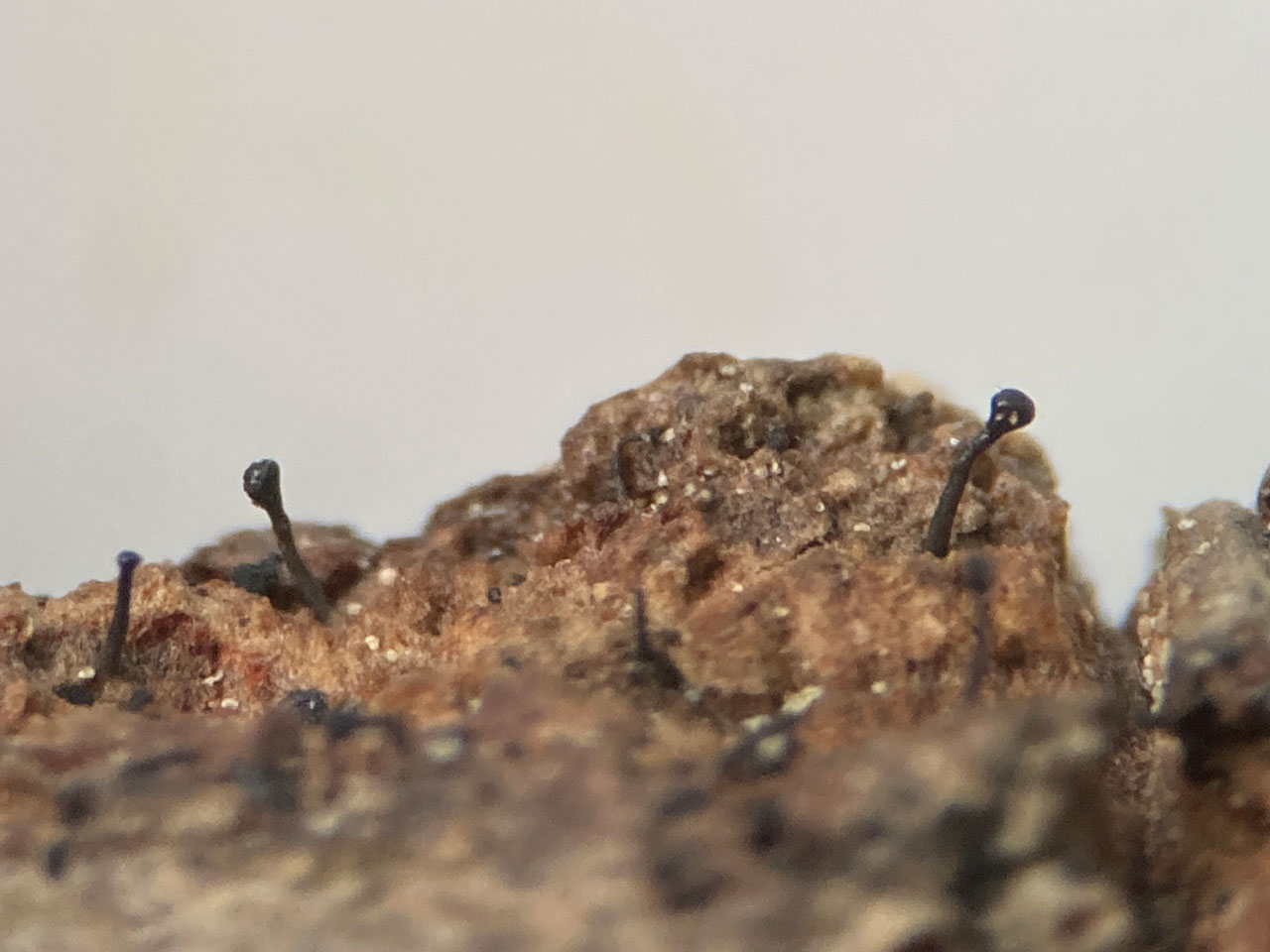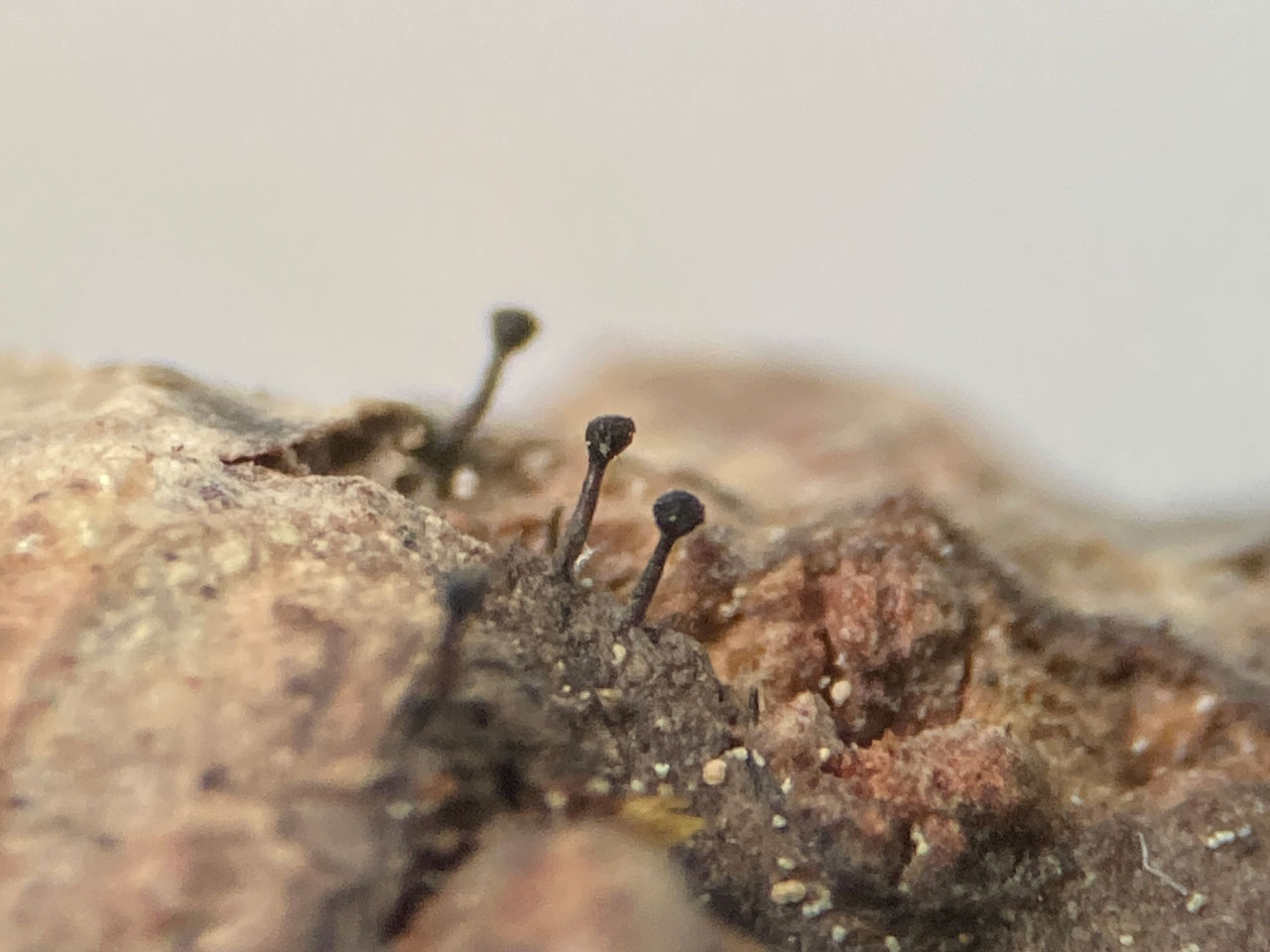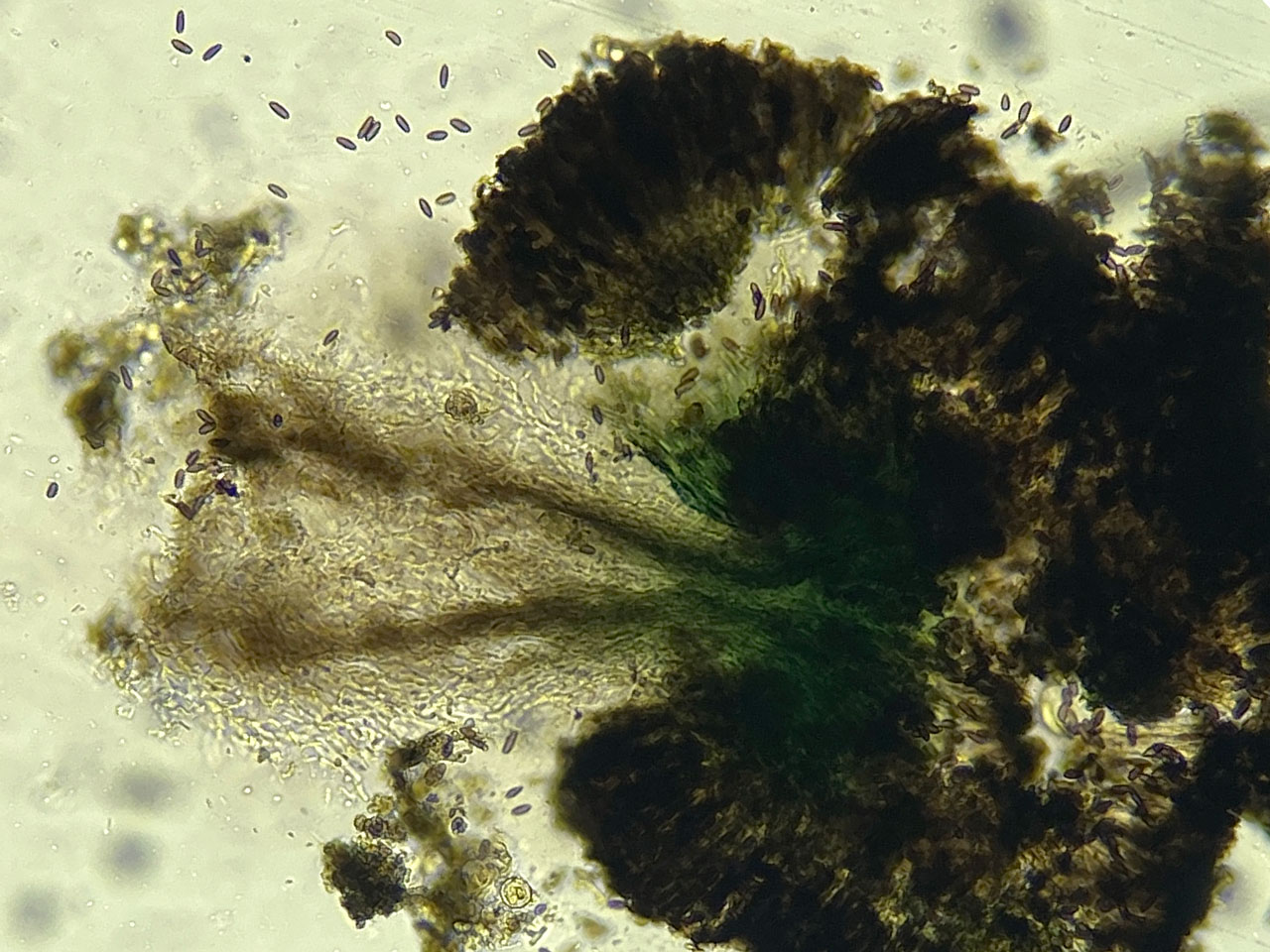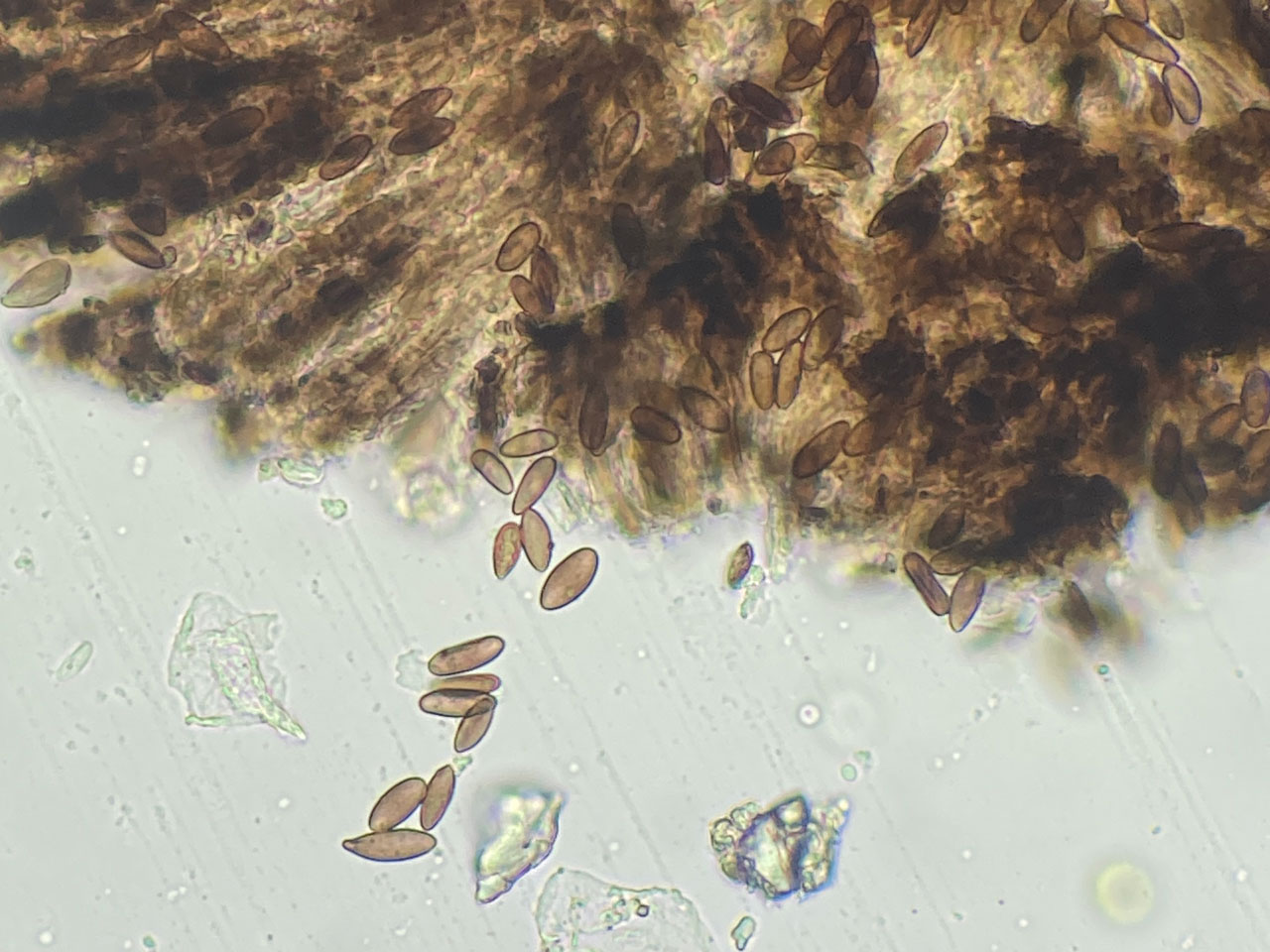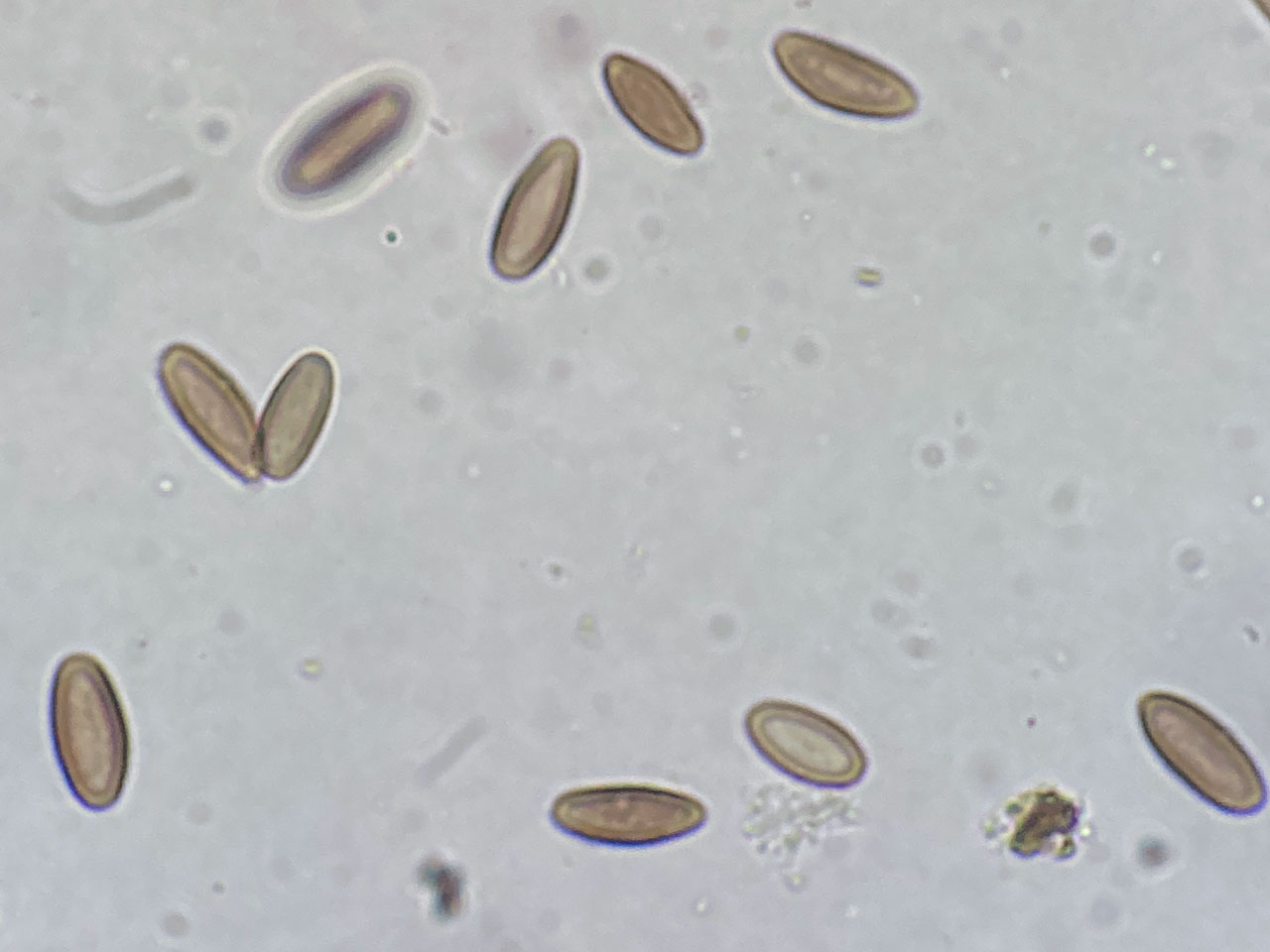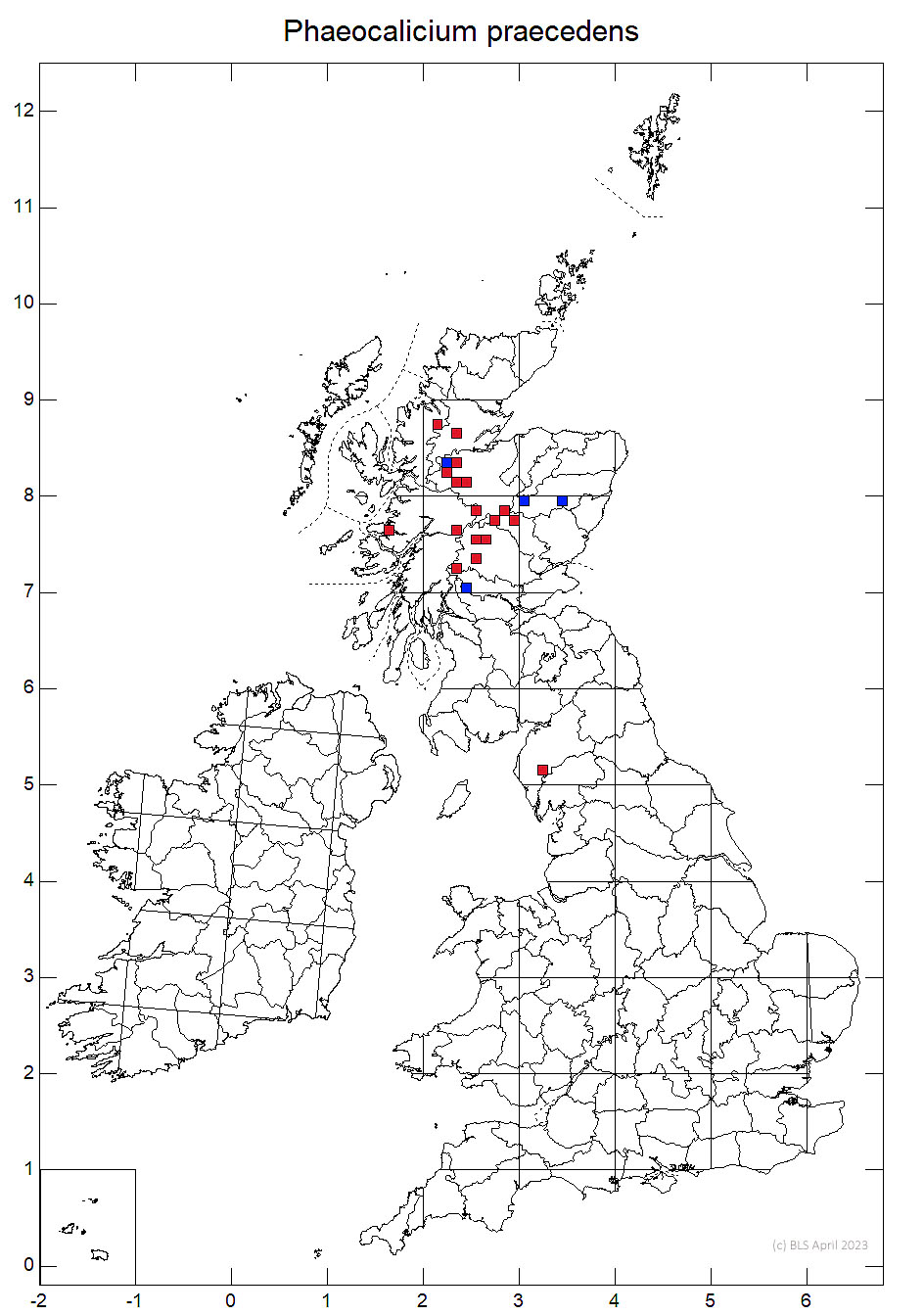Phaeocalicium praecedens
A tiny pinhead fungus to be looked for within lenticels on the twigs of Aspen in upland woods. The similar but more widespread Phaeocalicium populneum differs in the one septate ascospores, a consistent K+ reddish-brown reaction in the stem, the shorter apothecia and it is not confined to Aspen but also found on planted Poplar cultivars.
Apothecia 0.6–0.9 mm tall, dark greyish to black, not pruinose; head 0.2–0.3 mm diam., lenticular; exciple brown with an aeruginose inner part; epithecium brown; hypothecium medium brown, sometimes tinged yellowish or aeruginose; stalk 0.04–0.07 mm diam., black, internally reddish brown, K+ aeruginose, usually without a gelatinous coat. Ascospores 11–13 × 4–5 µm, aseptate, smooth.
Phaeocalicium populneum differs in the 1-septate ascospores, K+ reddish reaction of the stalk and shorter apothecia.
On thin, living Aspen twigs and branches, especially within bark lenticels.

Rare, Scottish Highlands (E. & W. Inverness, S. Aberdeen, Perth), England (Cumbria).
In contrast to Phaeocalicium populneum this tiny pinhead is confined to Aspen in old woods, almost entirely in the Scottish Highlands, but with a single record from Borrowdale in the Lake District. Mainly in high altitude pasture woodlands, typically formerly summer grazed by cattle, but now long overgrazed. At risk from overgrazing by red deer in upland pasture woodlands, and a likely Red List species.
Britain: Notable
Scotland: Priority Taxon for Biodiversity in Scotland
Sanderson, A., Cannon, P., Coppins, B., & Simkin, J. (2025). Mycocaliciales: Sphinctrinaceae, including Chaenothecopsis, Mycocalicium, Phaeocalicium, Sphinctrina and Stenocybe. Revisions of British and Irish Lichens 52: 1–15.
Text by Neil A Sanderson based on Sanderson et al (2025)
